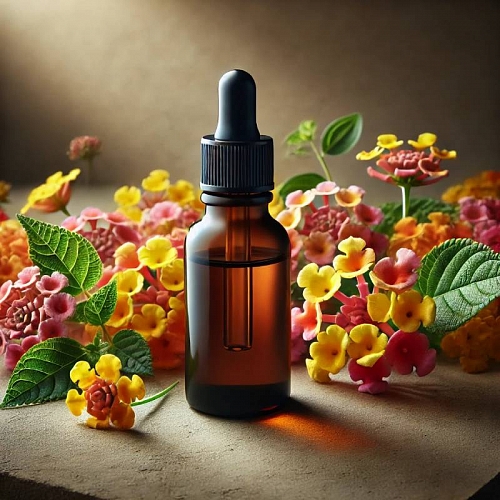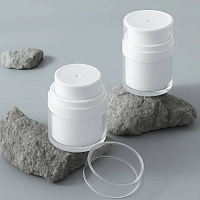-
 Absolutes
Absolutes
-
 Active Complexes
Active Complexes
-
 Actives and Peptides for Cosmetics
Actives and Peptides for Cosmetics
-
 Amino Acids
Amino Acids
-
 Food Flavorings
Food Flavorings
-
 Ayurveda
Ayurveda
-
 Vitamins
Vitamins
-
 Gelling Agents and Thickeners
Gelling Agents and Thickeners
-
 Hydrosols and Floral Waters
Hydrosols and Floral Waters
-
 Hydrolyzed Proteins
Hydrolyzed Proteins
-
 Fragrant and aromatic substances
Fragrant and aromatic substances
-
 Acids, Salts, Alcohols, and Alkalis
Acids, Salts, Alcohols, and Alkalis
-
 Preservatives and Antioxidants
Preservatives and Antioxidants
-
 Cosmetic Raw Materials
Cosmetic Raw Materials
-
 Dyes, Pearlescents, and Glitters
Dyes, Pearlescents, and Glitters
-
 Face Masks, Scrubs, and Dried Flowers
Face Masks, Scrubs, and Dried Flowers
-
 Natural Base Oils for Cosmetics
Natural Base Oils for Cosmetics
-
 Candle Supplies
Candle Supplies
-
 Melt and Pour Soap Bases
Melt and Pour Soap Bases
-
 Fragrance Oils
Fragrance Oils
-
 Surfactants
Surfactants
-
 Peelings for Skin
Peelings for Skin
-
 Herbal Powders and Plant
Herbal Powders and Plant
-
 Silicones and Conditioning Surfactants for Hair
Silicones and Conditioning Surfactants for Hair
-
 Packaging for Cosmetics and Perfumes
Packaging for Cosmetics and Perfumes
-
 Molds, Packaging, Tools
Molds, Packaging, Tools
-
 Organic Extracts
Organic Extracts
-
 Emollients for Cosmetics
Emollients for Cosmetics
-
 Emulsifiers
Emulsifiers
-
 Essential Oils
Essential Oils
Lantana camara Essential Oil: A Complex Aroma for Unique Cosmetic Formulations
Introducing Lantana camara Essential Oil, a fascinating and aromatically complex extract steam-distilled from the vibrant flowers and foliage of the Lantana camara plant. This essential oil presents a multifaceted fragrance profile, often described as herbaceous, slightly floral, with hints of spice and fruit. While its use in cosmetics requires careful consideration due to potential skin sensitivity in some individuals, its unique aroma can contribute an intriguing and distinctive character to specific cosmetic applications when used responsibly and at low concentrations.
Potential Applications and Areas of Use in Cosmetics (with Caution):
Due to potential skin sensitivity, the use of Lantana camara Essential Oil in cosmetics is limited and requires careful formulation and low concentrations. Its primary contribution is its unique aromatic profile:
- Fragrance Component in Perfumery (Trace Amounts): In highly diluted concentrations and as part of complex fragrance blends, Lantana camara Essential Oil can contribute unique herbaceous, floral, and spicy nuances to perfumes, colognes, and natural fragrance compositions. It should be used sparingly and with expert formulation.
- Scenting Natural Soaps (Low Concentration): When used at very low concentrations and properly diluted, it can impart a unique natural aroma to handmade soaps. Thorough testing for skin sensitivity is crucial.
- Aromatic Element in Potpourri or Scent Sachets for Linen (Indirect Cosmetic Use): While not directly applied to the skin, its aroma can subtly scent linen and clothing, offering an indirect aromatic cosmetic benefit. However, direct skin contact should be avoided.
- Experimental Aromatherapy Blends (Professional Use Only): In professional aromatherapy settings, and with extreme caution and proper dilution, its aroma might be explored for its potential mood-altering properties. However, direct topical application should be approached with significant care and expertise.
Key Considerations and Potential Benefits for Specific Cosmetic Applications (Use with Extreme Caution and Low Concentrations):
- Unique and Complex Aroma: Offers a multifaceted scent profile that can add intrigue to niche fragrance formulations when used judiciously.
- Natural Aromatic Note: Provides a natural alternative for scenting certain cosmetic products, appealing to consumers seeking botanical fragrances.
- Potential Mood-Altering Properties (Aromatherapy Context): Its aroma may have uplifting or balancing effects when inhaled, though this is more relevant in aromatherapy than direct cosmetic application.
Important Note on Safety and Usage: Lantana camara Essential Oil contains compounds that can cause skin irritation or sensitization in some individuals. It is crucial to use this essential oil at extremely low concentrations (well below 0.1% in final formulations), conduct thorough patch testing, and consult with a qualified cosmetic chemist or aromatherapist before incorporating it into any cosmetic product. Avoid direct application to the skin unless under expert guidance.
Cosmetic Recipe: Aromatic Linen Sachet (Indirect Cosmetic Use - Avoid Direct Skin Contact)
This recipe is for an aromatic sachet to subtly scent linen and clothing, offering an indirect aromatic cosmetic benefit. This is not for direct skin application.
| Ingredient | Quantity |
|---|---|
| Dried Lavender Flowers | 2 tablespoons |
| Dried Rose Petals | 2 tablespoons |
| Dried Chamomile Flowers | 1 tablespoon |
| Orris Root Powder (Fixative) | 1 teaspoon |
| Lantana camara Essential Oil | 1-2 drops MAXIMUM |
| Small Muslin Bag or Fabric Scrap | 1 piece |
Instructions:
- In a small bowl, gently combine the dried lavender flowers, dried rose petals, and dried chamomile flowers.
- Add the orris root powder to the mixture and stir gently. The orris root powder helps to fix the scent and make it last longer.
- Very carefully add only 1-2 drops (maximum) of Lantana camara Essential Oil to the dried flower mixture. Stir gently to distribute the oil evenly. Use minimal amounts due to potential skin sensitivity if direct contact occurs.
- Place the scented mixture inside the small muslin bag or tie it securely in a fabric scrap.
- Place the sachet in drawers, closets, or among linens to impart a subtle, natural aroma.
Application Recommendations (For the Aromatic Sachet - Avoid Direct Skin Contact):
- Place the sachet among clean linens, towels, or clothing to impart a subtle, natural fragrance.
- Avoid direct and prolonged skin contact with the sachet contents.
- If the scent fades over time, you can carefully add another single drop of Lantana camara Essential Oil to the sachet, ensuring it is well absorbed by the dried materials.
- This recipe is for aromatic purposes only and is not intended for direct skin application. Due to the potential for skin sensitivity associated with Lantana camara Essential Oil, direct skin contact should be avoided. Always prioritize safety and use this essential oil with extreme caution in any cosmetic context.
| INCI | Lantana Camara Essential Oil | |
| Other | ||
| Application | Cosmetics: in creams, gels, masks, shampoos and tonics for oily and inflamed skin Aromatherapy: for colds, coughs, viral infections Perfumery: as a tart heart note or base in herbal compositions Body care: in repellents, anti-itch creams Massage: for inflammation, muscle pain, skin rashes Soap and candles: in medicinal and herbal series Veterinary medicine: in ointments and care products for animal fur Household cosmetics: in antibacterial sprays and cleaning formulas | |
| Packaging | container for transportation | |
| View | liquid | |
| Type | natural | |
| Solubility | oil, alcohol, ether | |
| Purpose | Lantana camara essential oil is used in cosmetics, aromatherapy, folk medicine, perfumery, as well as in veterinary medicine and household compositions. In cosmetics, it is used to care for problem and oily skin due to its antiseptic and antibacterial properties. It is also used in shampoos against dandruff and skin itching. In aromatherapy, it helps with colds, coughs, and respiratory congestion due to its expectorant and immunostimulating effects. Suitable for creating natural insect repellents, added to soap, ointments, balms. In perfumery, it is used as a rare bitter-herbal note in niche, botanical and phyto-compositions. | |
| Properties | Antibacterial Antifungal Anti-inflammatory Expectorant Healing Antiseptic Antiprickly Repellent Emollient Immunostimulating | |
| Packing | 5 ml | |
| Name | Lantana camara Essential Oil, 5 ml | |
| Aroma | Herbaceous, spicy, slightly tart, with woody and slightly camphor notes. The aroma is bright, warm, with pronounced plant energy, reminiscent of a mixture of sage, eucalyptus and dried flowers. Combines well with oils of thyme, rosemary, lavender, cedar, geranium, tea tree, mint, eucalyptus. | |
| Minimum count | 1 | |
| Features | All information presented on the site is for reference only | |
| Dosage | Aroma lamp, diffuser: 2–4 drops Face cosmetics: 0.2–0.5% Body cosmetics: up to 1% Shampoos, tonics, gels: 0.3–0.7% Massage oils: 3–5 drops per 10 ml of base Perfumery: 1–4% Soap and candles: up to 1% of weight Baths: 4–5 drops per salt or emulsifier It is recommended to conduct a sensitivity test before use. Do not use in pure form on skin and mucous membranes. | |
| Color product | Light yellow or clear, flowing oil. | |
| Att brand | India | |
| Valid until | 04.2027 | |










 Add to cart
Add to cart Buy in 1 click
Buy in 1 click

 Add a review
Add a review To favorites
To favorites To compare
To compare


















